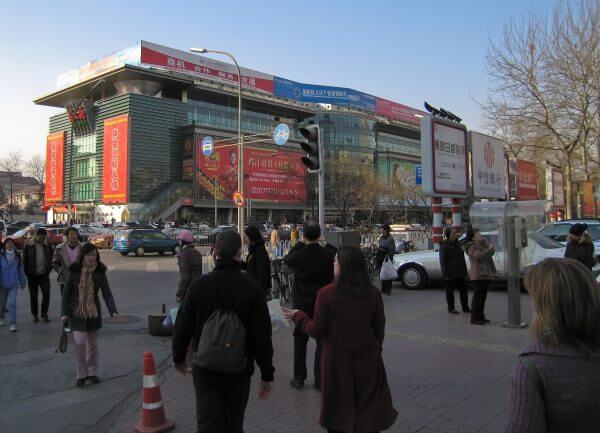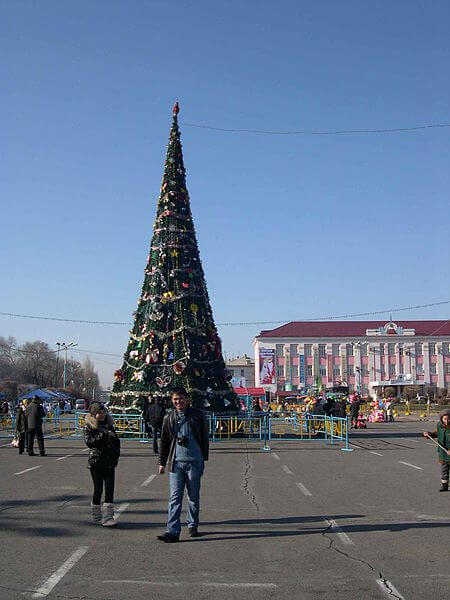
All crazy for Western customs
What’s next for Cuba? Obama’s policy, Castro’s death and Trump’s election have made the political future of the country uncertain, but it is undeniable that things have recently changed on the island. Over the past few months ‘bites’ of capitalism have seduced Cuban citizens – Karl Lagerfeld’s Chanel fashion show in Havana being a remarkable example of the changing wind – and reminded us of other, previously socialist or communist countries, that have long now been fascinated by capitalist customs. What happened in the countries of the former Soviet Union and China is an interesting example of the increasing allure that Western and capitalist habits exercise on (once) communist states.
Eat like an American
On the 30th of January 1990, the year before the Union of Soviet Socialist Republics (USSR) collapsed, the first Mc Donald’s restaurant in the Soviet Union opened in Moscow. It had been estimated that 1,000 people would visit it on its first day, but eventually 30,000 vistors arrived for the opening, eager to try the food of the famous American chain.
The same year the first Mc Donald’s ever opened on Chinese mainland was inaugurated in Shenzhen, and the Western chain soon became a common family hangout spot and even a popular place for first dates. In general Western chains such as Mc Donald’s and Kentucky Fried Chicken (KFC) are considered quality establishments, and are highly regarded by the Chinese middle class.
Dress (Western) to impress
Since the launch of Deng Xiaoping’s “open door policy” in 1978, and the consequent opening of Chinese markets to foreign businesses, Chinese people have increasingly found everything labeled “Western” more and more interesting. That is why, in the last few decades, tons of counterfeit merchandise with illegally copied trademarks were produced in China: electronics, designer clothing and everything else you can and can’t imagine. We’re not only talking about objects: entire chains of scam stores were set up, such as fake Apple and Ikea stores.
While Russia doesn’t compare to China in terms of counterfeiting talent, it is interesting to note that the custom of jeans-trafficking was wildly popular in the Soviet Union: in the late fifties the country was invested by a jeans fever, and the latter ceased to simply be clothes, becoming instead a symbol of Western freedom. Unofrtunately, Soviet-made jeans were not as cool as the originals, so traffickers had to start sourcing and selling original denim items, risking serious punishments: there have even been cases of people sentenced to death for trafficking jeans.

Christmas fever
Western festivities have been gaining ever-increasing popularity in China. Valentine’s Day, Halloween and even Thanksgiving Day are becoming more and more popular, but Christmas is definitely the most beloved among Western celebrations. When Christmas approaches, nearly every store puts out decorations representing Santa Claus, snowflakes and even Christmas trees. The festivity is so popular among the Chinese that every year thousands of them flock to the Santa Park located in the Finnish city of Rovaniemi – Santa’s official hometown. This success eventually led the park to hire Mandarin-speaking staff and even to plan the building of a similar facility in the Chinese city of Chengdu in the Sichuan province.
The same passion for Western Christmas symbols – lighted trees, presents, cards, Santa Claus and street decorations – is shared by Russians, despite Christmas being a controversial issue in the Soviet period: there was no place for such a reactionary celebration in the brand new atheist society envisioned by Communism. The party’s strategy to solve this awkward situation was to move the Christmas celebrations to the 1st of January, assigning all its symbols to the New Year festivity. Under Stalin the New Year celebration, Novyi God, was declared a national family holiday – a sort of surrogate Christmas stripped of any Christian meaning. This is why today in Russia Christmas trees are known as New Year’s trees…

Article written by Lucia Ghezzi and Margherita Ravelli.
Cover photo: Chinatown gate in Havana, Cuba by Abdecoral (CC0 Public Domain).